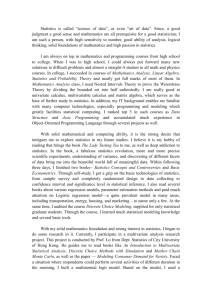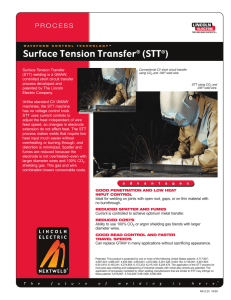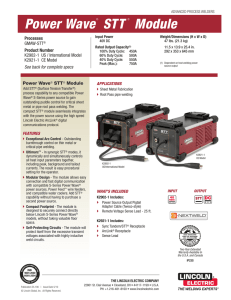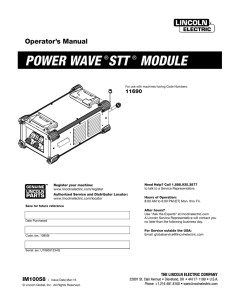STT 351 Outline.doc
advertisement
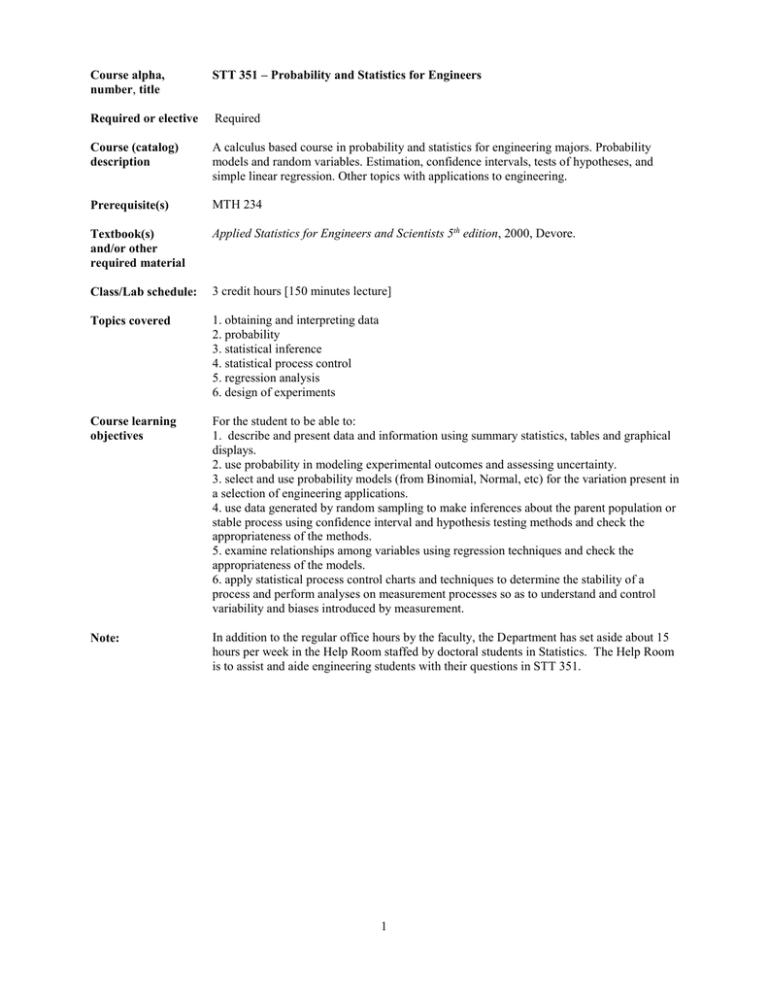
Course alpha, number, title STT 351 – Probability and Statistics for Engineers Required or elective Required Course (catalog) description A calculus based course in probability and statistics for engineering majors. Probability models and random variables. Estimation, confidence intervals, tests of hypotheses, and simple linear regression. Other topics with applications to engineering. Prerequisite(s) MTH 234 Textbook(s) and/or other required material Applied Statistics for Engineers and Scientists 5th edition, 2000, Devore. Class/Lab schedule: 3 credit hours [150 minutes lecture] Topics covered 1. obtaining and interpreting data 2. probability 3. statistical inference 4. statistical process control 5. regression analysis 6. design of experiments Course learning objectives For the student to be able to: 1. describe and present data and information using summary statistics, tables and graphical displays. 2. use probability in modeling experimental outcomes and assessing uncertainty. 3. select and use probability models (from Binomial, Normal, etc) for the variation present in a selection of engineering applications. 4. use data generated by random sampling to make inferences about the parent population or stable process using confidence interval and hypothesis testing methods and check the appropriateness of the methods. 5. examine relationships among variables using regression techniques and check the appropriateness of the models. 6. apply statistical process control charts and techniques to determine the stability of a process and perform analyses on measurement processes so as to understand and control variability and biases introduced by measurement. Note: In addition to the regular office hours by the faculty, the Department has set aside about 15 hours per week in the Help Room staffed by doctoral students in Statistics. The Help Room is to assist and aide engineering students with their questions in STT 351. 1 Relationship of course to ME program outcomes The following measurement standard is used to evaluate the relationship between the course outcomes and the educational-program outcomes: 3 = Strong Emphasis, 2 = Some Emphasis, 1 = Little or No Emphasis. (a) an ability to apply knowledge of mathematics, science, and engineering—3 (b) an ability to design and conduct experiments, as well as to analyze and interpret data—1 (c) an ability to design a system, component, or process to meet desired needs—1 (d) an ability to function on multi-disciplinary teams—1 (e) an ability to identify, formulate, and solve engineering problems—1 (f) an understanding of professional and ethical responsibility—1 (g) an ability to communicate effectively—1 (h) the broad education necessary to understand the impact of engineering solutions in a global/societal context—1 (i) a recognition of the need for and the ability to engage in life-long learning—1 (j) a knowledge of contemporary issues—1 (k) an ability to use the techniques, skills, and modern engineering tools necessary for engineering practice—2 (l) design, build, and test in mechanical systems area—1 (m) design, build, and test in thermal/fluids area—1 (n) application of advanced mathematics—1 (o) capstone design experience—1 Contribution to professional component: 100% Mathematics and Basic Science Person(s) who prepared this description Habib Salehi Date of Preparation August 2002 2

